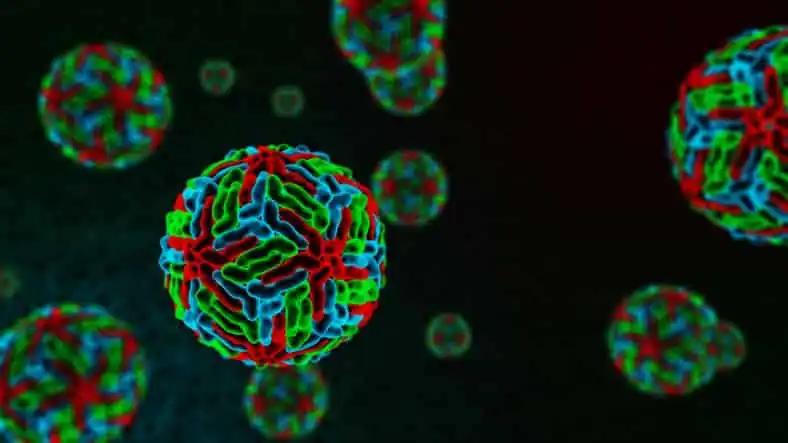KEY TAKEAWAYS
- The MM-014 phase 2 trial aimed to determine the overall survival (OS) for cohort B of MM-014 at a median follow-up of 41.9 months.
- In cohort B of the trial, patients with RRMM who had previously received 1-2 LoTs with a lenalidomide (LEN)-based regimen were eligible.
- Many patients in cohort B had disease refractory to LEN (75.9%) or had experienced disease relapse following LEN (24.1%).
- Patients with RRMM treated with the POM, DARA, and DEX combination therapy demonstrated favorable overall survival at long-term follow-up.
Patients (pts) with multiple myeloma (MM) must carefully select a second line of therapy after the first line of treatment (LoT). The MM Tx landscape has evolved, but no consensus exists on the optimal sequence. Nearly all patients with multiple myeloma (MM) receive lenalidomide (LEN) in the first or second line of therapy; patients with relapsed/refractory multiple myeloma (RRMM) whose LEN benefits have been exhausted require enhanced options. The MM-014 trial (NCT01946477) investigated the efficacy of pomalidomide (POM)-based therapy in early LoT RRMM. In cohort B, POM+daratumumab (DARA) +low-dose dexamethasone (DEX; DPd) demonstrated promising efficacy with an overall response rate (ORR) of 77.7% and a median progression-free survival of 30.8 months (Bahlis. Leuk Lymphoma 2022). To determine the ultimate overall survival (OS) for cohort B of MM-014 at a median follow-up of 41.9 months.
MM-014 contained three cohorts. In cohort B, patients 18 years old with RRMM who had previously received 1–2 LoTs with a LEN-based regimen as their most recent were eligible. Patients were administered DPd in 28-day cycles as follows: POM 4 mg orally daily on days 1–21; DEX40 mg (age 75 y) or 20 mg orally (age >75 y) on days 1, 8, 15, and 22; DARA intravenously 16 mg/kg body weight on days 1, 8, 15, and 22 of cycles 1–2, days 1 and 15 of cycles 3–6, and day 1 of processes 7 and beyond. ORR was the principal endpoint. OS and safety were secondary outcome measures. OS was calculated as the time elapsed between the beginning of Tx and the time of mortality from any cause; pts were censored as the last known survival date. Certain treatment-emergent adverse events (TEAEs) permitted dose interruptions and reductions. Patients were monitored for OS, subsequent treatment, and second primary malignancies for up to 5 years after enrolling the last patient.
About 85 (75.9%) of 112 patients in cohort B had disease refractory to LEN, 27 (24.1%) had disease relapse following LEN; 69 (61.6%), and 43 (38.2%) had received 1 and 2 prior LoT, respectively. At a median follow-up time of 41.9 months (range: 0.4–73.1), 96 (85.7%) patients had discontinued treatment, primarily owing to disease progression (n=54; 48.2%). Patients received POM, DEX, and DARA for respective median durations of 15.7 (range: 0.3–73.1), 13.7 (range: 0.1–72.5), and 15.2 (range: 0.1–72.7) months. Around 50 (44.6%) patients perished, primarily owing to the progression of the disease (n=28 [25%]). The median OS was 56.7 months (95% CI, 46.5–not reached [NR]).
OS was 53.6 months (95%CI, 28.6–NR) for patients refractory to their most recent prior LEN-based Tx and NR (95%CI, 47.6–NR) for patients who relapsed. In 7 (6.3%), 9 (8%) and 6 (5.4%) patients, respectively, TEAEs led to discontinuation of POM, DEX, or DARA. In addition, 31 (27.7%) and 38 (33.9%) patients experienced Tx-related TEAEs leading to a reduction in POM and DEX, respectively, and 55 (49.1%), 17 (15.2%), and 65 (58.0%) patients experienced Tx-related TEAEs leading to an interruption in POM, DEX, and DARA, respectively. Neutropenia was the most prevalent Tx-related TEAE leading to dose modification of POM (reduction, n=17 [15.2%]; interruption, n=38 [33.9%]) and DARA (interruptions, n=30 [26.8%]); insomnia was the most prevalent Tx-related TEAE leading to dose modification of DEX (reduction, n=10 [8.9%]; interruption, n=1 [0.9%]). Patients with RRMM treated with DPd demonstrated a favorable OS at long-term follow-up. The safety profile of DPd was comparable to previous reports, with no newly identified safety signals. These results indicate that DPd is advantageous for RRMM patients who have exhausted the benefits of LEN in prior LoT.
Clinical Trial: https://clinicaltrials.gov/ct2/show/NCT01946477
Nizar J Bahlis, Christy Samaras, Donna Reece, Michael Sebag, Jeffrey Matous, Jesus Berdeja, Jesse Shustik, Gary Schiller, Siddhartha Ganguly, Kevin Song, Christopher S. Seet, Mirelis Acosta-Rivera, Donald Quick, Bertrand Anz, Gustavo Fonseca, Unicel-Anne Flores, Hongjuan Liu, Christian Gentili, David Siegel/POMALIDOMIDE, DARATUMUMAB, AND DEXAMETHASONE AFTER LENALIDOMIDE TREATMENT IN PATIENTS WITH RELAPSED OR REFRACTORY MULTIPLE MYELOMA (RRMM): FINAL OVERALL SURVIVAL ANALYSIS OF THE PHASE 2 MM-014 STUDY/Inc, M. G. (n.d.). POMALIDOMIDE, DARATUMUMAB, AND DEXAMETHASONE AFTER LENALIDOMIDE… by Mr. Nizar J Bahlis. Library.ehaweb.org. Retrieved July 14, 2023, from https://library.ehaweb.org/eha/2023/eha2023-congress/386711/nizar.j.bahlis.pomalidomide.daratumumab.and.dexamethasone.after.lenalidomide.html?f=menu%3D16%2Abrowseby%3D8%2Asortby%3D2%2Ace_id%3D2489%2Aot_id%3D27922%2Atrend%3D4016%2Amarker%3D4178



